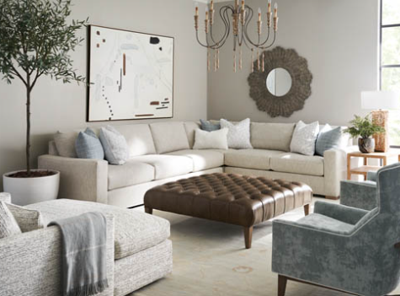
Some furniture is purchased for the moment. Other pieces are chosen for a lifetime. In luxury homes, the most treasured interiors are built around objects that carry a sense of permanence—tables marked by years of family gatherings, chairs as solid as the day they were made, and cabinets crafted with the precision of an artist’s hand. True heirloom-quality furniture doesn’t demand attention; it holds it through the weight of its materials and the mastery of its construction. In a world of fleeting trends, these works remind us that beauty deepens with time.
Understanding What Makes Furniture “Heirloom-Quality”
Heirloom-quality furniture begins with the fundamentals: premium materials, masterful construction, and timeless design. Solid hardwoods, carefully chosen for their grain, color, and strength, form the backbone of these pieces, giving them the resilience to withstand decades of daily life. Traditional joinery methods, like dovetails or mortise-and-tenon, provide structural integrity that modern shortcuts can’t replicate.
For those who value this level of artistry, a well-curated Amish furniture store offers a rare connection to a centuries-old tradition of woodworking. These makers approach each piece with the patience of a sculptor, shaping every detail by hand and finishing it to reveal the wood’s natural character. In an era of mass production, their work stands apart, built not for the season but for the story it will tell over generations.
How to Identify Quality Craftsmanship
Spotting a truly heirloom-worthy piece requires a trained eye and a bit of curiosity. Begin with the materials—solid hardwoods such as oak, cherry, or maple not only look richer but also age gracefully, developing a patina that adds to their appeal. Run your hand along the surface; a smooth, even finish without ripples or overspray signals careful sanding and sealing.
Examine the joints where pieces meet. Precision joinery, whether in the form of dovetails on a drawer or mortise-and-tenon in a table leg, indicates stability and long-term durability. The hardware matters, too—hinges and handles should feel substantial and move fluidly without wobble or looseness. Even the underside or back of a piece reveals clues; quality furniture is well-finished in the places most people never see, a mark of pride from the maker.
The Role of Design in Long-Lasting Luxury Furniture
While craftsmanship ensures a piece will endure physically, design determines whether it will remain visually relevant over the years. Timeless furniture often draws on classic proportions and balanced silhouettes that complement a variety of interior styles, from traditional to contemporary. This adaptability allows the piece to move seamlessly from one room, or even one home, to another without feeling out of place.
Many high-end designers embrace the idea that furniture should be both functional and emotionally resonant. Thoughtful details such as hand-carved accents, custom finishes, or inlaid patterns add character without overwhelming the form. According to Architectural Digest, transitional design—blending classic elements with modern touches—offers a style approach that keeps furniture relevant for decades. For the luxury homeowner, these design principles transform furniture from a purchase into a lasting investment.
Choosing Pieces That Fit Your Home’s Story
Every home has a narrative, shaped by the lives lived within its walls. The furniture you choose should reflect that story, whether it’s rooted in heritage, world travel, or a love for contemporary design. Start by considering how a piece will coexist with your existing interiors—color palettes, textures, and scale all play a role in creating harmony.
For homes with a strong architectural presence, such as grand entryways or open-plan living spaces, statement pieces can anchor the design while still feeling cohesive. In more intimate rooms, subtle details like a hand-rubbed finish or finely turned legs can add richness without overpowering the space. The goal is to select items that feel like they belong to the home from the moment they arrive, yet have the flexibility to evolve with it over time.
Investing in Furniture That Lasts for Generations
True luxury isn’t measured by price alone; it’s reflected in how well something endures. Furniture built with superior materials and meticulous craftsmanship doesn’t just fill a space—it becomes part of a family’s daily rhythm, gathering marks and memories that add to its character. This longevity also makes it a sustainable choice, reducing the need for frequent replacements and the waste that comes with them.
Understanding how to choose the right furniture for your living space means balancing visual harmony with functional needs, ensuring that each piece works for the way you live now and for years to come. Combining quality construction with a style that transcends passing trends allows you to create interiors that remain beautiful, functional, and meaningful for decades.
Choosing heirloom-quality furniture is as much about values as it is about aesthetics. It’s a commitment to craftsmanship, to materials that improve with age, and to pieces that become part of a family’s shared history. In luxury interiors, these choices offer more than visual appeal—they create a sense of continuity, linking past, present, and future in the spaces we call home.
When furniture is built to last for generations, it transforms from a simple purchase into a legacy. Each table, chair, or cabinet becomes a keeper of moments, a quiet witness to the lives unfolding around it, and proof that beauty and durability are inseparable when created with intention.
Related Articles:




(0) comments
We welcome your comments
Log In
Post a comment as Guest
Keep it Clean. Please avoid obscene, vulgar, lewd, racist or sexually-oriented language.
PLEASE TURN OFF YOUR CAPS LOCK.
Don't Threaten. Threats of harming another person will not be tolerated.
Be Truthful. Don't knowingly lie about anyone or anything.
Be Nice. No racism, sexism or any sort of -ism that is degrading to another person.
Be Proactive. Use the 'Report' link on each comment to let us know of abusive posts.
Share with Us. We'd love to hear eyewitness accounts, the history behind an article.